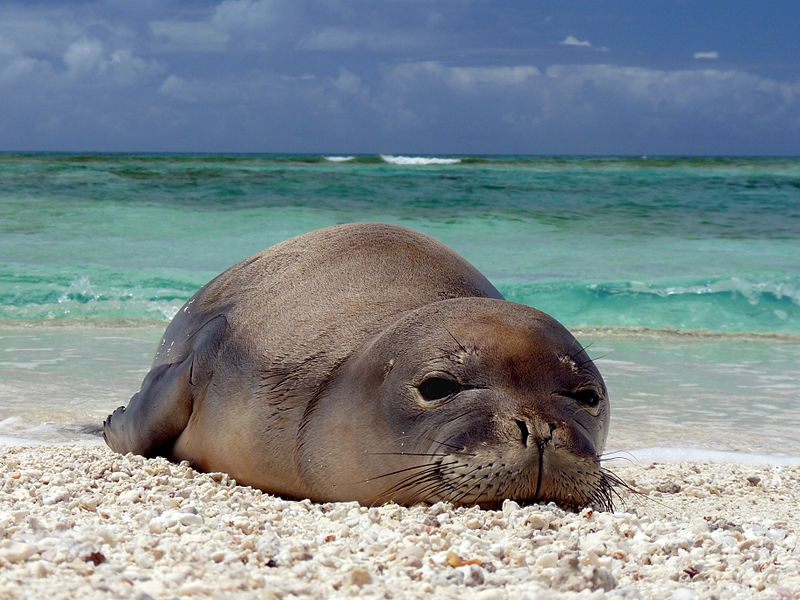Don’t Touch the Monk Seals
Or any undomesticated animal you meet.

While traveling to Poʻipū Beach, Kauaʻi, a man from Alabama came across a monk seal, lying asleep on the beach. It was a rare experience: There are only 1,400 Hawaiian monk seals left in the world. The man crept up close, filming with his phone, reached out, and stroked the seal’s side. Startled, the seal woke up and turned toward the man, who fled the beach, right past a sign that warned against getting close to wildlife.
He posted the whole encounter on Instagram.
It’s become popular to share this kind of encounter with a wild animal on social media. In this case, the post led authorities from the National Oceanic and Atmospheric Administration right to the seal-toucher. Under laws that protect endangered and marine mammals, this man-seal meeting was illegal. Based on the footage he had posted, as well as another video where he chased after a sea turtle underwater, the man was fined $1,500.

Once, people approached wild animals mostly to kill or capture them; otherwise, they gave them a wide berth. Animals as large as monk seals can be dangerous. But as the wild parts of the world disappear and human influence stretches everywhere, an encounter with a wild animal can seem like a special experience, and people can’t seem to resist getting to close—and showing their friends what happened.
Both social media companies and government agencies are trying to discourage this trend. Earlier this year, Instagram blocked the hashtag #quokkaselfie, a popular tag for photos featuring smiling humans and the cuddly-looking Australian marsupial. In 2017, the social media network also created a message about animal abuse that would pop up whenever a user searched something like “hug a sloth.” When people have gotten too close to wild creatures, government agencies have tracked them down and fined them, in the hope that the dad who lifted a baby manatee from the water or the two guys who “surfed” on a sea turtle would become examples of what not to do.

Besides the inherent danger of provoking a wild animal, these meetings can be fatal to the animal themselves. When people on the coast of the Pacific Northwest took home seal pups they thought were stranded, the pups didn’t survive the ordeal. In Yellowstone, the park had to euthanize a baby bison after tourists took it for a ride in their SUV.
In all these scenarios, people are responding a rare circumstance—a real encounter with a strange creature unlike our own kind. Sometimes they’re trying to help; other times, they want to experience something they never have before. But whether we know it or not, these animals’ lives are shaped by ours. Hawaiian monk seals are endangered in part because of marine debris, the loss of their shoreline habitat, and disturbances by people in the places where they flop out of the ocean. The least we can do is leave them alone when we encounter them directly. It’s like your parents told you when you were a kid in a shop full of delicate items: You can look, but don’t touch.










Follow us on Twitter to get the latest on the world's hidden wonders.
Like us on Facebook to get the latest on the world's hidden wonders.
Follow us on Twitter Like us on Facebook